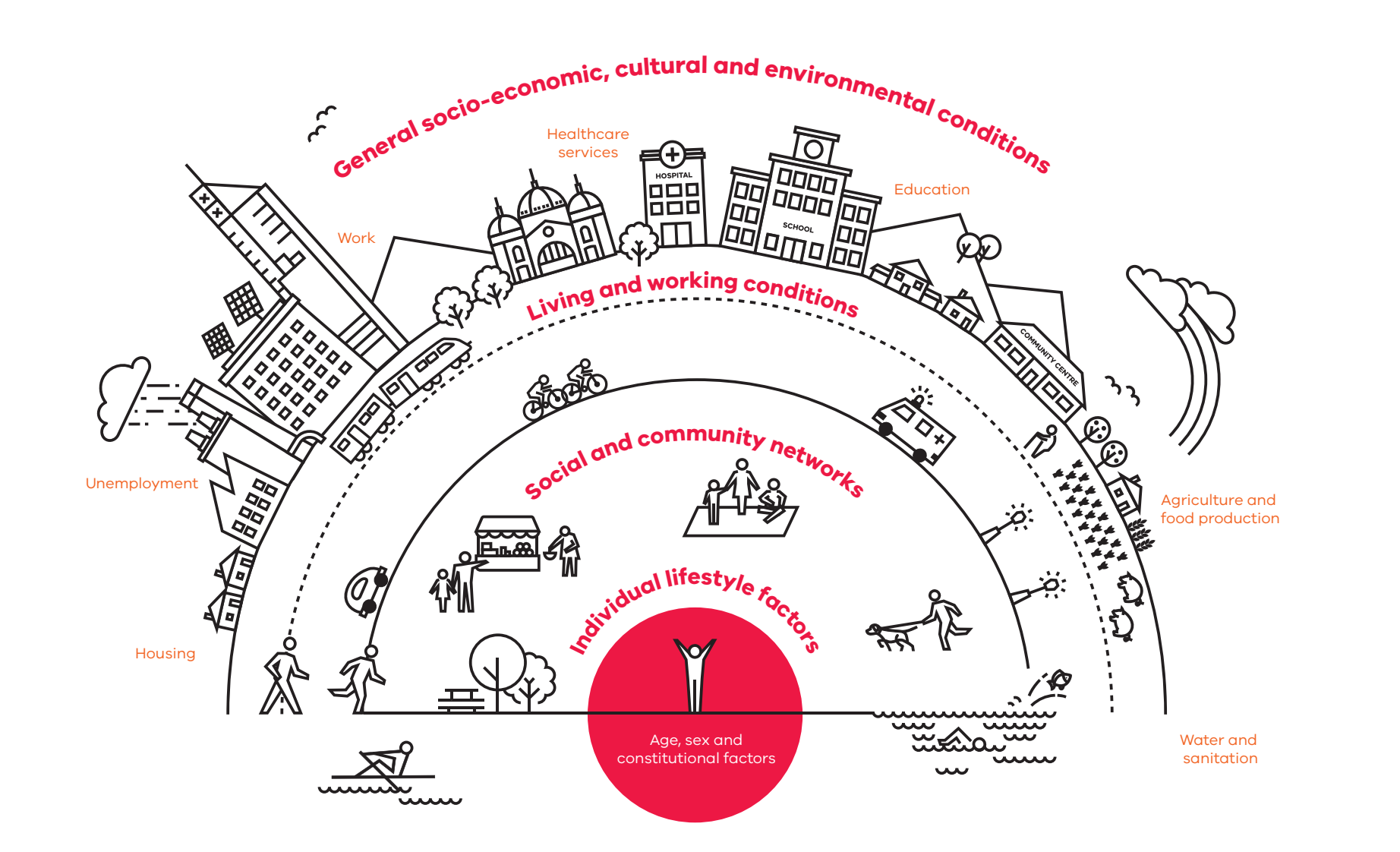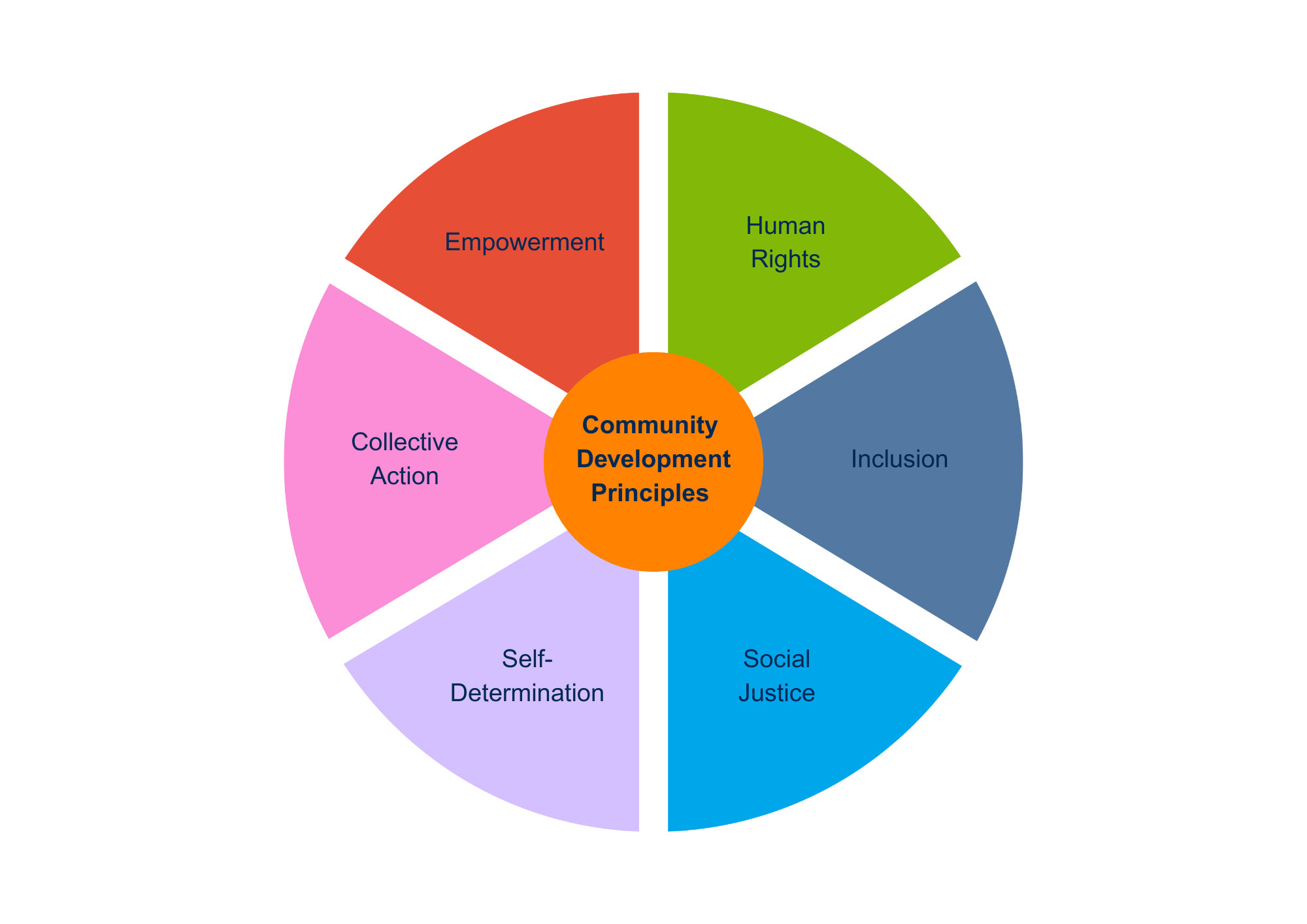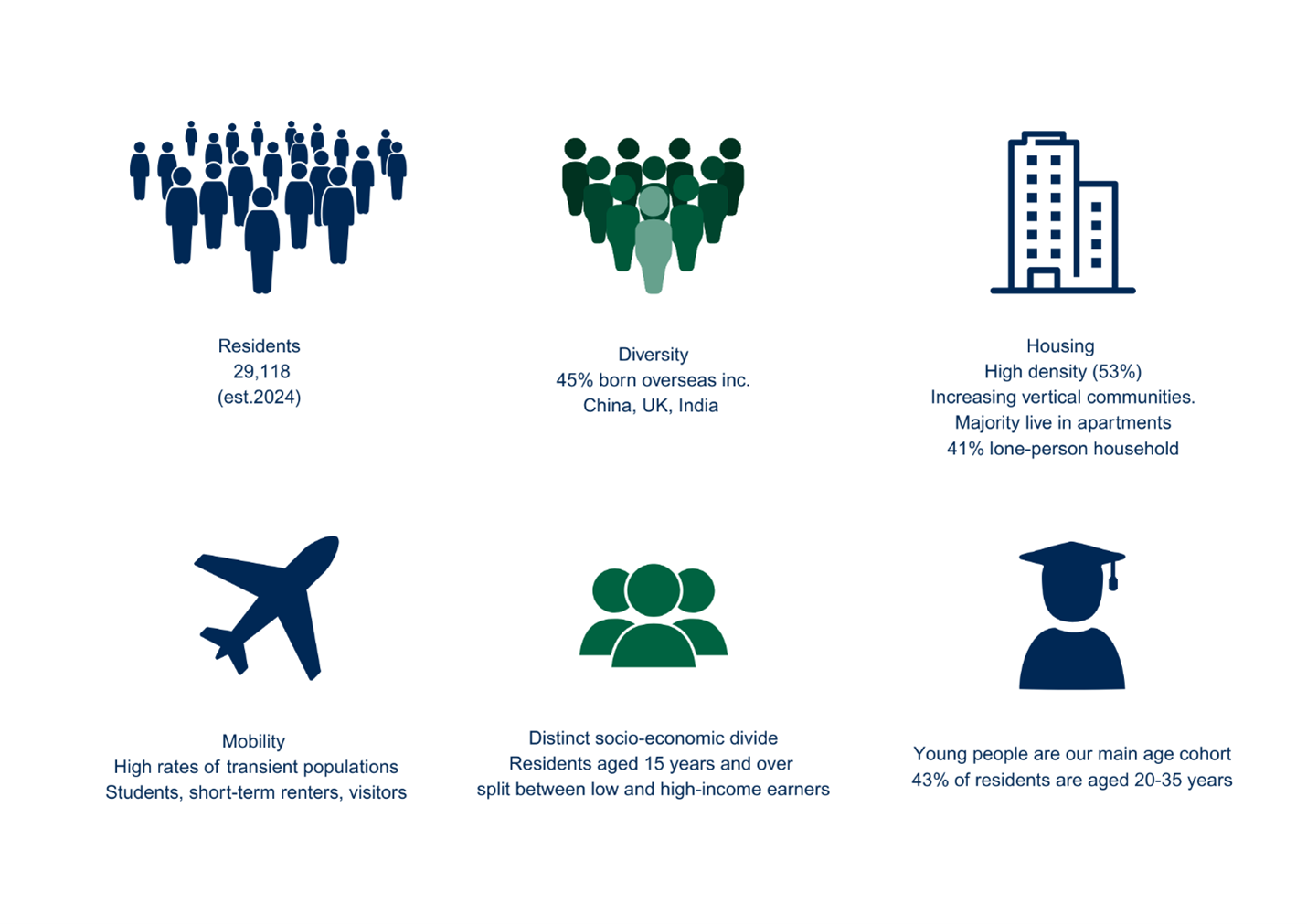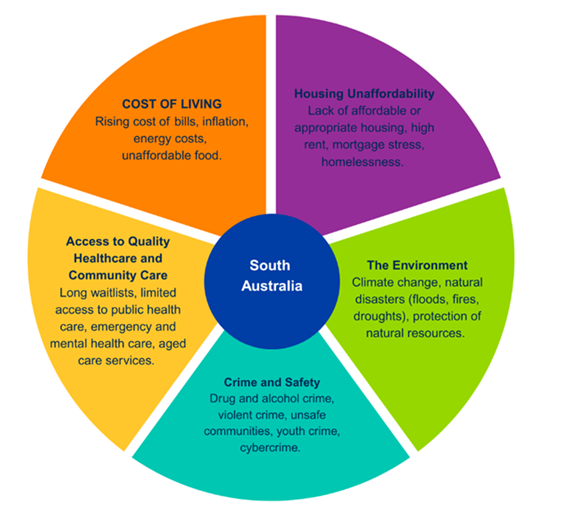City of Adelaide tampendi, ngadlu Kaurna yertangga banbabanbalyarnendi (inbarendi). Kaurna meyunna yaitya mattanya Womma Tarndanyako. Parnako yailtya, parnuko tappa purruna, parnuko yerta ngadlu tampendi. Yellaka Kaurna meyunna itto yailtya, tappa purruna, yerta kuma burro martendi, burro warriappendi, burro tangka martulyaiendi. Kumarta yaitya miyurna iyangka yalaka ngadlu tampinthi.
City of Adelaide acknowledges that we are located on the traditional Country of the Kaurna people of the Adelaide Plains and pays respect to Elders past and present. We recognise and respect their cultural heritage, beliefs and relationship with the land. We acknowledge that they are of continuing importance to the Kaurna people living today. And we also extend that respect to other Aboriginal Language Groups and other First Nations.
Project Information
We’re seeking your input to help shape wellbeing priorities for our city.
Your input will help us develop a wellbeing strategy and provide a framework to build a community that feels safe, valued, connected and empowered to thrive.
By contributing your perspective, you’ll help us understand what matters most to residents, visitors, students, workers, organisations, and community partners in improving wellbeing across the city.
Through our research and consultation, we have identified eleven priority groups:
Explore this project
In our city, wellbeing is defined as a dynamic state where individuals and groups feel safe, valued, connected, and empowered to thrive. Wellbeing encompasses physical, mental, emotional, cultural and social dimensions, shaped by lived experience, identity and place.
We recognise that there are groups who experience systemic barriers to wellbeing and that there are intersections between groups that can increase risks.
6 key themes that will guide our priorities
The Wellbeing Strategy focuses on the local conditions that help people feel well, connected, and supported in the City of Adelaide.
Drawing on research and feedback from previous community consultations, we’ve identified the following six key themes that will guide our priorities, outcomes, and actions within the Strategy.

These themes reflect the environments where wellbeing is experienced daily, in neighbourhoods, in libraries, in community gardens, in conversation.

The Wellbeing Strategy will be grounded in community development principles including:

The City of Adelaide is home to a population that stands out in both state and national contexts due to our diversity of culture and age.
We are proud to be one of the most culturally diverse places in South Australia, with 45% of residents born overseas. Nearly half of our residents (43%) are young adults aged 20 to 35 which reflects the influence of tertiary education in our city, including universities and vocational education and training (VET) providers.
This rich cultural mix brings energy and innovation to our city, while also highlighting the growing need for inclusive services, language access, cultural safety and pathways to civic participation.

While being a young city, we are also home to a significant number of older residents, particularly in North Adelaide. Currently, the proportion of people aged 50 and over is lower in our city when compared to Greater Adelaide, however older people make up nearly 30% of our local community. We anticipate growth in our ageing population which will require greater planning consideration for ageing well in place. We know as people grow older, wellbeing is closely tied to staying mobile, confident and connected to local social infrastructure including libraries, community centres and green spaces.
Another key feature of city life is the number of residents living alone, 44% according to the 2021 Census. Our rates of lone person householders are significantly higher than the rest of South Australia where less than 30% of people live alone. In a city that is growing vertically, this trend is not surprising. While living alone does not always correlate with loneliness, living alone can increase the risk of social isolation, especially when combined with other factors like high mobility/transience.
Frequent movement, common among migrant workers, international students, and short-stay accommodation users can disrupt social networks and make it harder to build lasting connections. When social ties are fragile, people can become isolated, particularly if they lack local family and support structures.
The 2024 City of Adelaide Resident Survey revealed 53% of residents feel a strong sense of belonging to their local community. People who have lived in the city longer report a stronger sense of belonging. We want to encourage people to stay by creating regular, meaningful opportunities for people to meet, engage in creative activities, learn new skills and participate in neighborhood life.
Today, the City of Adelaide is a lively cultural, recreational, employment and services hub attracting more than 371,250 students, workers and visitors daily (Kepler Analytics, 2024/25). We are also becoming a place where more people live year-round.
The City of Adelaide has a vision to double the city’s resident population to 50,000 by 2036, from our current estimated resident population of 29,118 (City of Adelaide Population Profile profile.id, 2024).
The City of Adelaide influences wellbeing through multiple interconnected roles including public spaces, community infrastructure and programs, social and community planning, public health, community safety, sport and recreation, and the opportunities we create for people to participate in civic and community life.
We maintain libraries, community centres, the Adelaide Park Lands and squares, lease community facilities, and activates spaces where social connection can flourish. We also support volunteering, lifelong learning, community events and programs that help build trust and strengthen neighbourhood identity.
We want to be clear about our role and focus our efforts to achieve the best outcomes for our community. The Community Wellbeing Strategy will primarily focus on building social capital, while recognising the role of economic and human capital in achieving community wellbeing.
Image: Community Wellbeing Indicators | LGA South Australia.
The City of Adelaide Strategic Plan 2024-2028 outlines a commitment to develop a Community Wellbeing Plan by 2026, review the Active City Strategy by 2025, and review the Wellbeing (Public Health) Plan by 2026 (legislated requirement). The development of a new Community Wellbeing Strategy will enable us to meet these strategic commitments.

The Community Wellbeing Strategy will provide a framework and align City of Adelaide community services and future partnerships, assist us in responding to changing capital city needs and enable effective service delivery for our community at priority group (population) and neighbourhood (place) levels.
Our research and recent consultations have determined there are key issues that face South Australian’s and city users and residents including:
City of Adelaide


How we are working together
We asked you about what wellbeing means to you and how we can strengthen it together.
We wanted to know:
- Barriers: What are some of the challenges or barriers to connection and wellbeing in the City of Adelaide?
- Opportunities: How can we strengthen connection and wellbeing across our city?
- Vision: What does a thriving Adelaide look like for residents, visitors, students, and workers?
Here is what we heard from you:
Next Steps
-
Timeline item 1 - complete
Confirm approach with Council
-
Timeline item 2 - active
Targeted Stakeholder and Community Engagement
Nov to Dec 2025
-
Timeline item 3 - active
Draft Wellbeing Strategy for Council endorsement to consult
Nov to Feb 2026
-
Timeline item 4 - incomplete
Work with our community to finalise the Wellbeing Strategy
Mar to Apr 2026
-
Timeline item 5 - incomplete
Final Strategy for Council for adoption
June 2026






